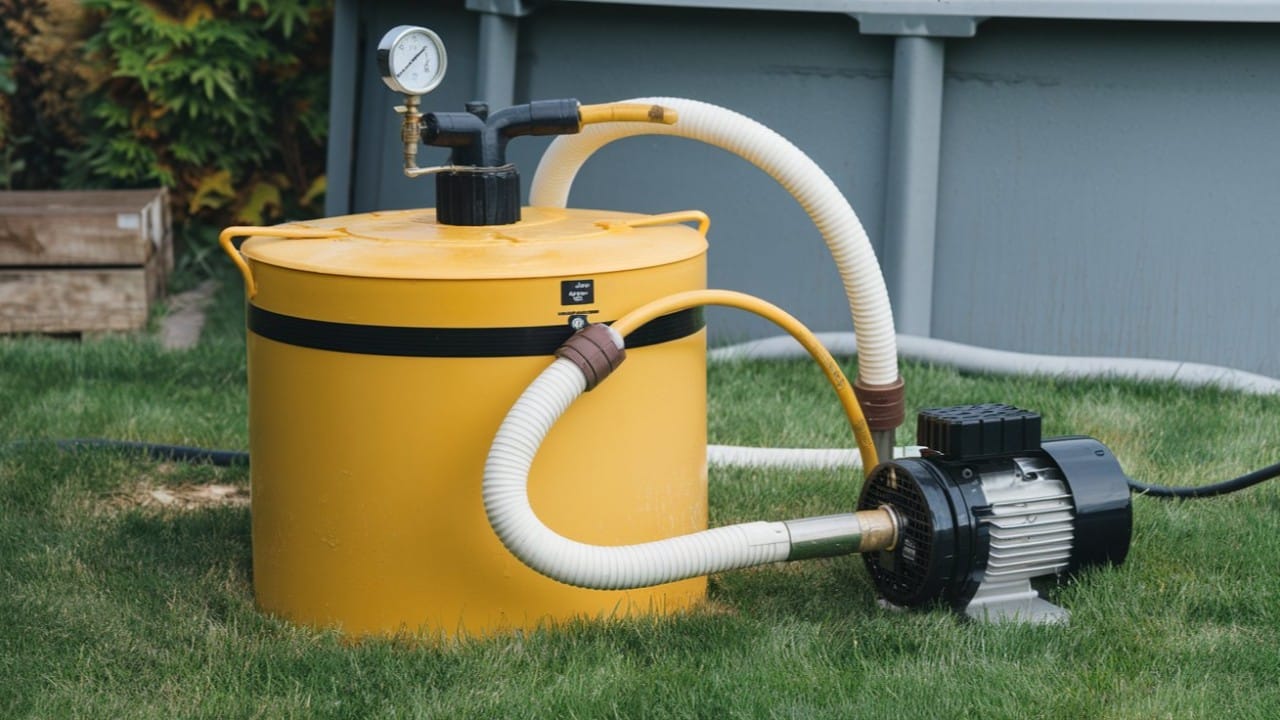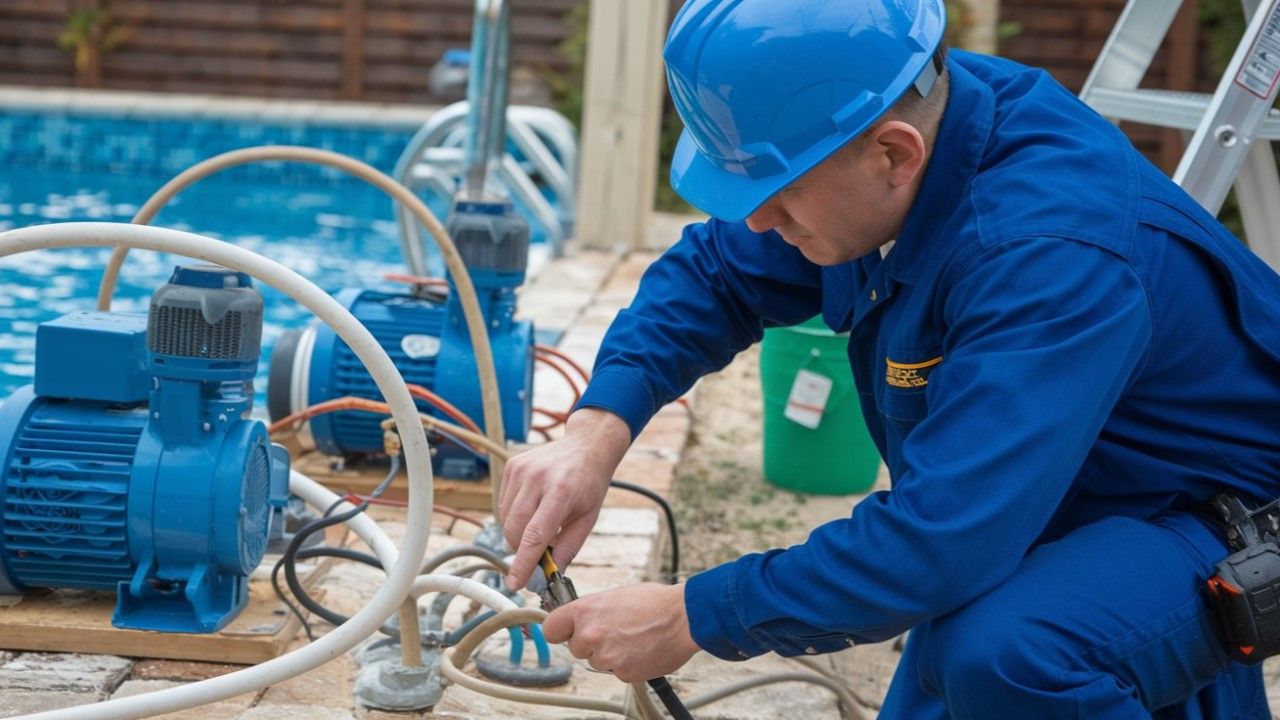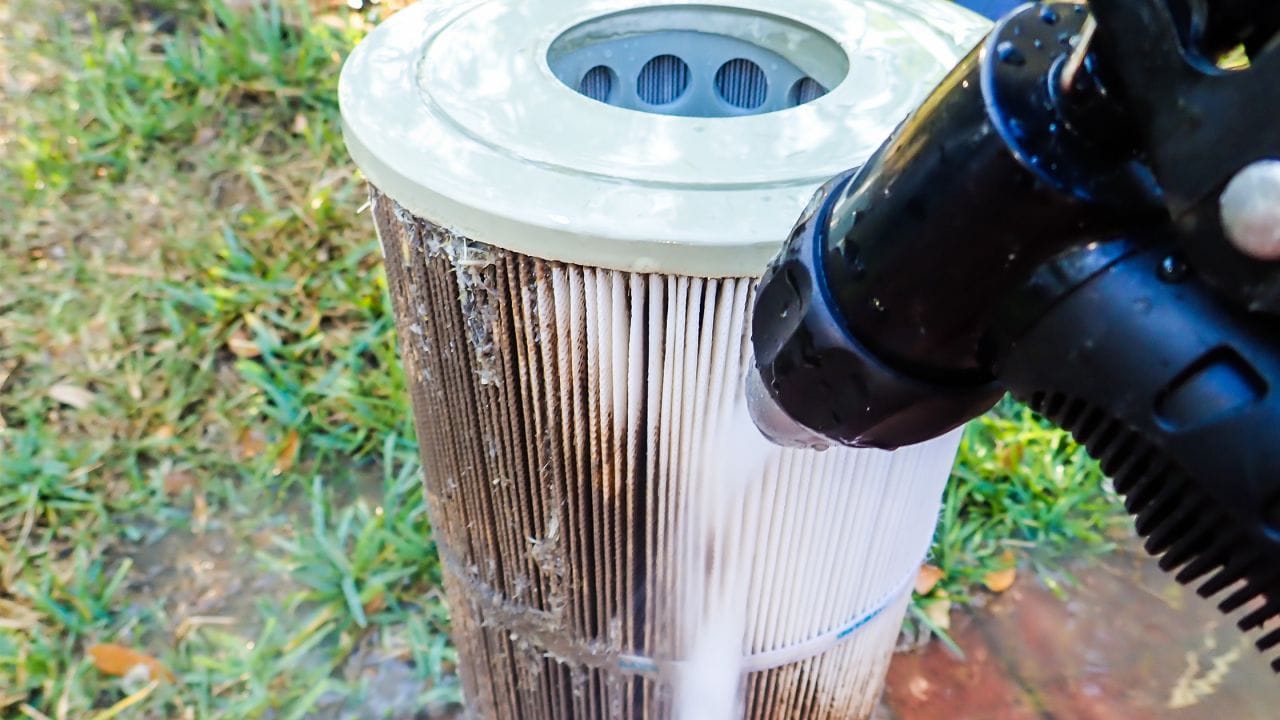Pool Pump Costs Revealed: What You'll Pay in 2025

Need a new pool pump for your swimming oasis? The price might surprise you. A new pool pump costs between $200 and $1,200, with some high-end models reaching $6,000. Most homeowners spend around $1,300 on their replacement unit.
The replacement cost of your pool pump varies substantially based on several factors. Single-speed pumps cost $300 to $900, and variable-speed options range from $800 to $2,000. Variable-speed models can save 50% to 80% on energy costs over time. Labor fees add $100 to $400 to the cost of installing your pool pump. The total cost depends on the type of your pool, as above-ground and in-ground pools have different requirements.
This piece breaks down everything that affects these prices to help you understand your pool pump's actual cost in 2025. We've got you covered with complete information before you make this investment, whether you're replacing an old unit that typically lasts 8-12 years or installing a new system.
Understanding Pool Pump Costs in 2025
The global inground pool pumps market is expected to show strong growth, reaching $348 million by 2025. Market experts predict a steady 3.5% yearly growth rate that will continue until 2033.
Pool pump replacement costs in 2025 range from $700 to $4,000. Most homeowners spend around $1,300 for a complete replacement. The pump unit costs between $200 and $1,200, based on its features. Adding professional installation will cost you an extra $100 to $400.
The Department of Energy regulations from 2021 continue to shape the market in 2025. Single-speed pumps are no longer produced for inground residential pools. By September 2025, replacement motors for these older pumps will start vanishing from the market.
These new rules have sped up the change toward energy-saving options. Variable speed pumps now lead the market growth. Though they cost more upfront, these pumps cut energy use by 50-80% compared to older single-speed models.
Prices vary across regions in 2025. Phoenix homeowners pay between $1,000 and $2,000 for pool pump installation. Southern California's prices run higher, with premium variable-speed pump installation reaching $2,300.
Technology advances keep reshaping the market. Smart home systems and automation features attract more buyers. Pool pumps now come with AI and IoT features that enable live adjustments and maintenance alerts. This helps improve performance and lower running costs.
New swimming pool construction and higher disposable incomes help expand the market. People's growing environmental awareness leads them to choose green pump options that save both water and energy.
What influences the price the most
The price of a new pool pump in 2025 depends on several factors. These elements will help you make a smart choice when you buy this important pool equipment.
Above-ground vs. in-ground pump pricing
Your pool type will affect your pump investment. Inground pool pumps cost more than above-ground models. These pumps are larger and more powerful because they work with complex plumbing systems. Above-ground pumps work with simpler pool structures and are easier on your wallet. Inground pumps use 230V electricity, while above-ground pumps run on 115V.
Types and Sizes of Pool Pumps
Most homeowners spend around $1,100 on pool pumps, with prices ranging from $700 to $1,500. High-quality pumps or those needing extra plumbing can cost up to $5,450. The right pump size is vital—a small pump leads to stagnant water and burnout, while an oversized one wastes energy and money.
Single-speed, dual-speed, and variable-speed pumps
Single-speed pumps are the cheapest option upfront, costing between $250 and $500. Two-speed pumps ($300-$1,600) come with high and low settings and can save 50-75% in energy costs compared to single-speed models. Variable-speed pumps ($800-$2,500) give you the best flexibility and efficiency. They cut energy use by up to 90%. These pumps pay for themselves within 2-3 pool seasons.
Low-head, medium-head, and high-head pumps
Low-head pumps ($150-$650) work best with water features. Medium-head pumps ($300-$800) are perfect for standard pools. High-head pumps ($800-$1,300) suit pools with multiple water features, slides, or spas.
How horsepower and flow rate affect cost
Horsepower has a big effect on purchase and operating costs. Small pools can use ¾ HP pumps, while larger residential pools might need 3-5 HP models. Monthly operating costs rise with horsepower—from about $50 for 0.75 HP to $120 for 4 HP pumps. Each increase in horsepower means you'll pay more upfront and over time.
Installation and Labor Costs
The total cost of a pool pump goes way beyond its purchase price. Let's get into what you'll pay to get that pump running in 2025.
Pool pump installation cost breakdown
Labor fees for professional pool pump installation typically range from $100 to $400. Several factors affect this price. A straightforward replacement with the same brand, horsepower, and type will cost around $200. The cost jumps to $280-$500 if you switch to a different brand or model that needs rewiring or new pipes.
The estimated cost for a complete pool pump replacement in April 2025 runs between $803 and $982. This price tag covers disconnecting your old pump, mounting the new one, connecting it to existing plumbing, and making sure everything works properly.
DIY vs. hiring a professional
You could save $100-$400 in labor costs by doing it yourself. Nevertheless, this choice comes with significant risks. Pool pump installation needs complex electrical work and plumbing knowledge.
Common DIY mistakes include:
- Faulty pump installation
- Incorrect plumbing connections
- Failing to inspect for leaks
A poorly installed system can lead to higher energy bills, reduced efficiency, and damage to your equipment. Most manufacturers will void your warranty if you don't use a professional installer.

Electrical and plumbing modifications
Your new pool pump might need extra modifications, especially when you have a different type. Licensed electricians charge $40-$100 per hour for their work. A new exterior receptacle with a cover usually costs $200-$275.
Plumbing changes add more costs, with plumbers charging $45-$150 per hour to replace pipes and connectors. You'll need to budget another $100-$200 if your setup requires digging to bury the pump.
Professional installation will give a proper setup that keeps your warranty valid and prevents costly problems later. The upfront cost is worth the peace of mind.
Additional and Ongoing Expenses
Your pool pump purchase is just the beginning. You'll need to plan for more costs that will add to your total investment. These ongoing expenses will affect your pool pump's value over time.
Timers, filters, and water features
Pool pump accessories will increase your original investment costs. A timer helps manage energy and costs between $50 and $100. A new pool filter installation ranges from $250 to $2000, based on the type you choose. Your dream pool with water features like a waterfall needs a second pump, adding $250 to $1600 to your budget.
You'll need to replace filters frequently. High-quality cartridges typically last 1-2 years. Saltwater pools work best with pumps that have plastic outer casings instead of metal to prevent corrosion.

Monthly energy costs and maintenance
Pump type makes a big difference in energy costs. Traditional single-speed pumps use about $500 in electricity each year. Variable-speed models cut energy use by up to 80%.
Pool maintenance costs run between $30 and $260 monthly. Yearly costs break down this way:
- DIY maintenance: $600-$1000
- Professional service: $1500-$1800
- Water costs: $500-$1000, depending on local rates
A standard 2000-watt pool pump running 8 hours daily uses about 480 kWh monthly. An equivalent variable-speed pump only needs 72 kWh. This huge efficiency difference means variable-speed pumps pay for themselves in 2-3 years.
Robotic Pool Cleaners as a Maintenance Solution
In addition to timers and filters, a robotic pool cleaner can significantly reduce your pool’s maintenance burden. Priced between $500 and $2,000, these devices automatically clean debris, algae, and dirt from your pool’s surfaces, reducing the workload on your pump and filter. This can lower energy costs and extend the life of your pump by preventing clogs and overexertion. High-end models with smart features, like remote control via smartphone apps, add convenience and precision to pool maintenance. While the upfront cost is notable, robotic pool cleaners can save $100–$300 annually on professional cleaning services or filter replacements.

Warranties and brand differences
Top brands give better warranty coverage. Warranty coverage ends if the products aren't professionally installed. DIY installation might save you $100-$400 upfront, but denied warranty claims could cost you much more later.
Home warranty companies protect against unexpected repair costs for about $660-$ 1,100 per year. This covers components like heaters ($150-$1200), pump motors ($250-$650), and filter replacements ($250-$2000).
High-end models cost 80% more than standard pumps. They come with premium features like stainless steel components, self-priming functions, and smartphone controls.
Conclusion
Buying a pool pump is a significant investment for pool owners. The costs can vary depending on the pump type, horsepower, installation requirements, and features. Single-speed pumps cost less upfront. However, variable-speed models ultimately provide better long-term value through energy savings. These pumps pay for themselves within 2-3 seasons.
The market clearly favors energy-efficient options now. The DOE regulations are phasing out single-speed pumps. Smart homeowners should consider variable-speed options despite their higher original cost. These pumps cut monthly electricity bills by 50-80% and offer better control with quieter operation.
Professional installation adds $100-$400 to your upfront costs but helps protect your warranty and prevents costly issues in the long run. The total investment becomes clearer when you add accessories like timers and filters, plus regular maintenance costs.
Take time to review your pool's specific needs before making the final choice. Your pool's size, features, and how often you use it will help determine the right horsepower and pump type. Pool pump shopping may seem daunting at first. But with this information, you can choose a pump that balances upfront costs with long-term value for your backyard oasis.
